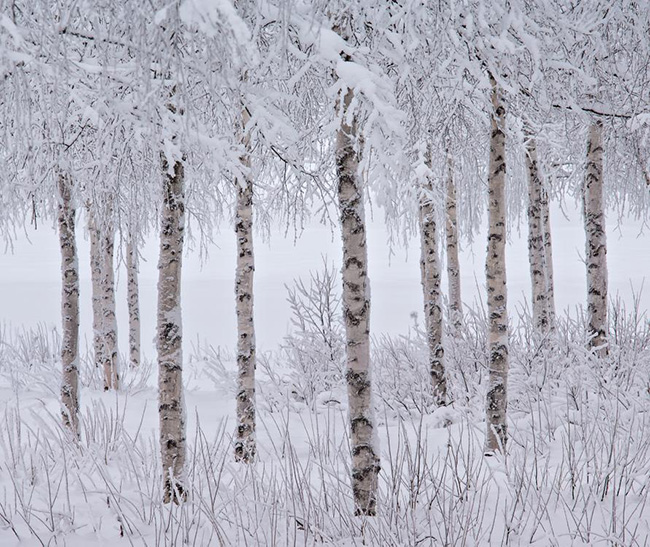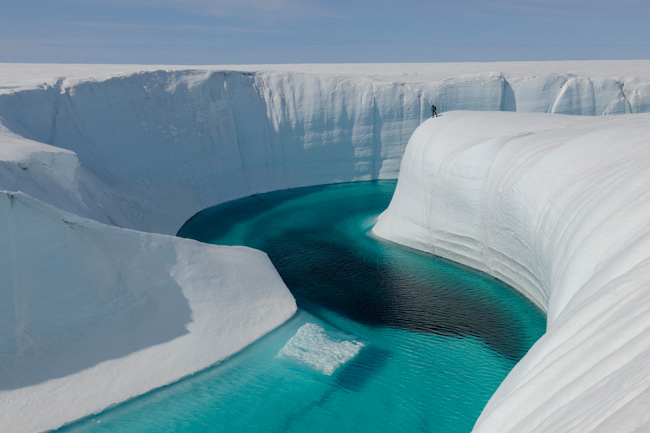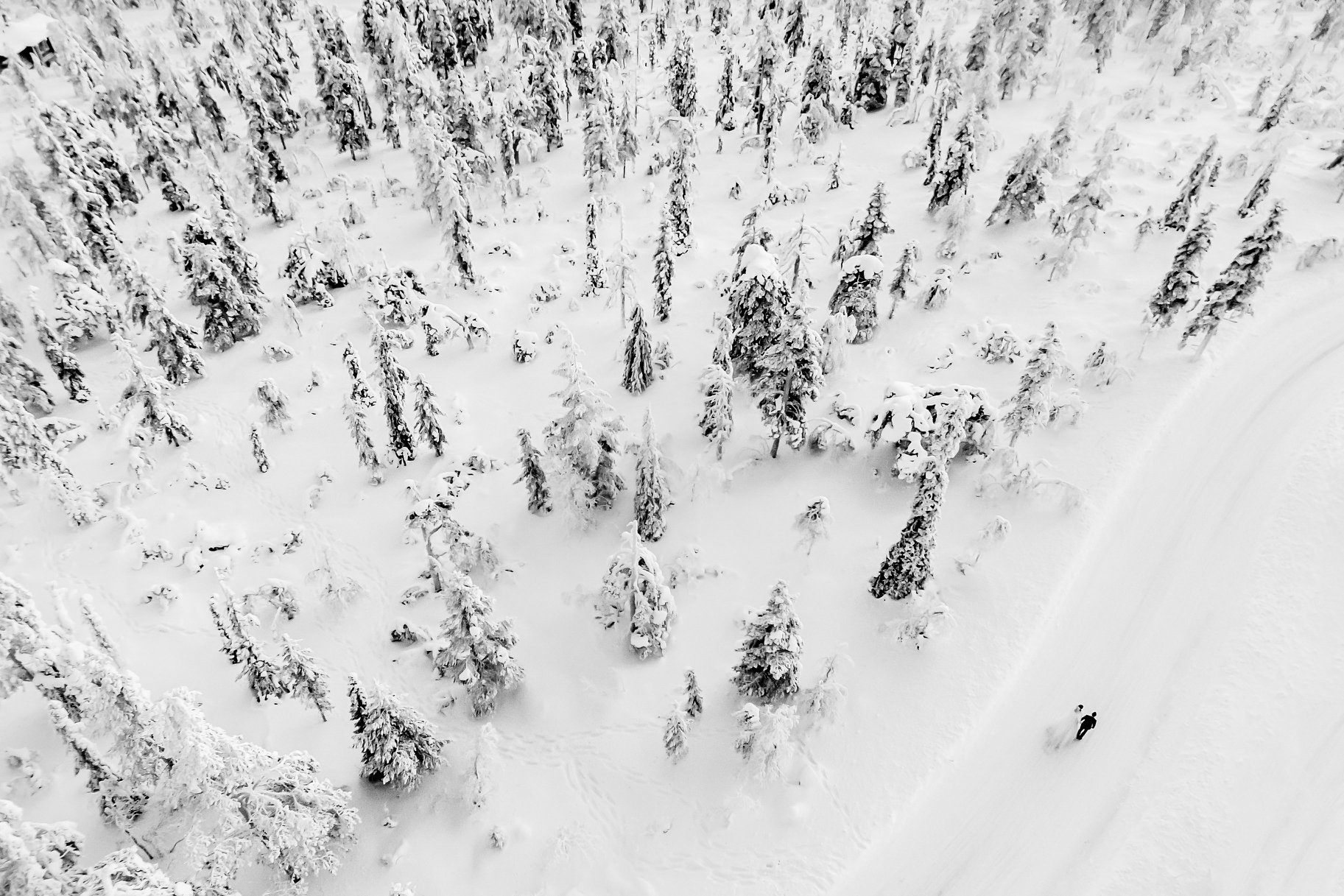
Would you like to learn how to take great winter landscape photos? Well, we’ve put together a number of the most essential winter landscape photography tips for better photos so that the time you spend out in the cold will be well worth it when you get home and go through your images.
Winter photographs have that magical feel, don’t they? When snow and frost cover everything, it all looks new and exciting. Even the most mundane, familiar scenes are transformed to give a new perspective, but winter photography brings challenges that other seasons don’t.
1: Winter-Proof Yourself and Your Gear

The first of our winter landscape photography tips is often overlooked by photographers impatient to get out and get shooting, but it’s worth doing some preparation work before you leave home to make sure you have a good, productive shoot without having to cut it short.
- Keep your batteries warm, and take spares – batteries lose power very quickly in low temperatures. Keep them in an inner pocket of your coat so your body heat helps keep them warm.
- Make sure you have a sturdy, yet easy-to-carry tripod with you. It should be simple to set up too, so you don’t have to fumble around and waste precious time.
- Stop your camera lens fogging up – when you go from the cold to a warm, indoor spot to warm up, your lens will fog up straight away from the moisture build-up. It’s easy to avoid this by putting your camera inside your gear bag with a lens cover on before you go into a warm place, and leave it to warm up before you get it out again.
- Use photography gloves – gloves are essential for winter landscape photography, but most regular gloves are too bulky for working camera buttons and dials. You can buy special photography gloves with thin thermal fabric on the fingertips and the added bonus of extra grip fabric on the palms so your camera won’t slip out of your hands.
- Wear layers of warm clothing, so they can be removed or added as you feel you need to during the day. Outer garments need to be windproof, breathable, and water-repellent, and your boots need to be insulated and breathable too. Don’t forget sunglasses, lip balm, water, and energy-giving snacks.
2: Contrast is Key

Autofocus is our friend in most scenarios, but snow and ice in the winter landscape can throw it off. If you find your camera is hunting for focus in all the white, try to focus on something darker than the snow so your camera has the contrast it needs to focus. For example, if you’re photographing snow on a tree branch or on rocks, focus on any exposed bark or stone. For easy post production, we’ve created a set of Landscape Photography Presets in collaboration with The Photo Argus.
3: Avoid Gray-Looking Snow Images: Use Exposure Compensation

This winter landscape photography tip is a way to ensure you don’t end up with gray-looking snow! The whiteness of the snow can confuse your camera’s exposure meter, so you have to adjust exposure compensation by around +0.1 to +0.2 to get that gorgeous, pure white snow.
4: Catch the Best Light
Winter sunrises and sunsets can add a whole layer of drama to your landscape photography – especially when they happen just before or after a snowstorm. There’s an added bonus for those of us who struggle to get out of bed in the summer to catch early sunrises – in winter, the sun comes up much, much later! Now you can get a good night’s sleep and shoot magical winter sunrises.
5: Choose the Right Shutter Speed

When the snow is falling, you need to choose what shutter speed you are going to use to achieve the effect you want. Fast shutter speeds will freeze movement, showing snowflakes falling as white dots, and if you use a slow shutter speed the flakes will look like streaks of white on your image.
On a calm day, 1/125th second may be enough to freeze the movement of falling snow, but if it’s very windy and the snow is heavy, then even much higher shutter speeds may not give you the crisp result you want. If you’re not sure, then try bracketing your shots using different exposure settings to discover the one that works for the situation you’re in at that moment.
6: Look for Color

If you live in an area where there is heavy winter snowfall, pretty soon everything is white – and nothing stands out as a focal element. On those monochrome days, look for splashes of color that stand out in the white and grey landscape, like a brightly-painted house.
7: Shoot During Blue Hour

Here’s another one of our winter landscape photography tips, and it’s a great way to add a new dimension to your landscape photography. The window of time before the sun rises or after it sets can bring a soft and magical blue light that is offset perfectly by the warm yellows and oranges of lights in houses or on streets.
8. Don’t Forget the Details

Things can look so much more interesting close up in winter than at other times of the year. Take a closer look at plants, trees, and fallen leaves for some great wintry close-up images. If you fancy trying your hand at winter macro photography, then check out this article on how to create amazing winter macro images with very little gear.
Look at the textures of leaves and plants covered with frost, or capture a dramatic image of a leaf trapped in ice. Forests aren’t the only places you’ll find good subjects for close-ups – beach photography is often overlooked when it comes to winter.
9: Try Experimenting with Filters

There are a few filters you can use in wintertime, but a great one to try is a circular polarizing filter. You may think of a circular polarizing filter as one to use on summer days to remove sun glare from water, but it can also reduce the glare of the snow too. You can also make your skies really pop with these filters, but be careful not to overdo it, as too much polarizer makes the sky look an unreal shade of blue.
10: Embrace the Moodiness

Not all snow scenes and winter landscapes need to be upbeat or tranquil. Maybe you’re shooting in a landscape that is totally bleak and unwelcoming. Don’t avoid it – really embrace the ‘dead of winter’ vibe instead. Using minimalist compositions to highlight one thing that sums up the desolation of the scene will give you dramatic images. Ruins, abandoned buildings, fallen trees, rusting cars, or other suitable subjects work really well for this.
Winter Landscape Photography Tips: Final Thoughts

If you can get out and about during the winter to shoot, then you can find some awesome scenes to photograph. You don’t even have to go further than your own backyard – snow and ice transform the everyday scene into something magical. To sum up, here’s a quick list of our top tips:
- Wear warm clothing, footwear, and take extra care of your camera in the cold weather
- Reduce focus hunting from your camera’s AF by focusing on areas of contrast to the snow
- Use exposure compensation to get that pure white snow scene
- Make the best use of sunrise and sunset for dramatic images
- Adjust your shutter speed to capture the kind of falling snow images you want
- Look for splashes of color to give an area of focal interest to snow scenes
- Try shooting winter landscapes during blue hour for an added dimension
- Don’t overlook the small details in the landscape for some stunning winter abstracts and macros
- Experiment with a circular polarizing filter
- Embrace the moodiness and bleakness of winter landscapes by choosing fitting subjects
We hope our winter landscape photography tips have given you some food for thought, and if you’re looking for some ways to keep those photography jobs coming during the cold weather, then take a look at our guide to booking winter photography jobs all season long.




Get Connected!